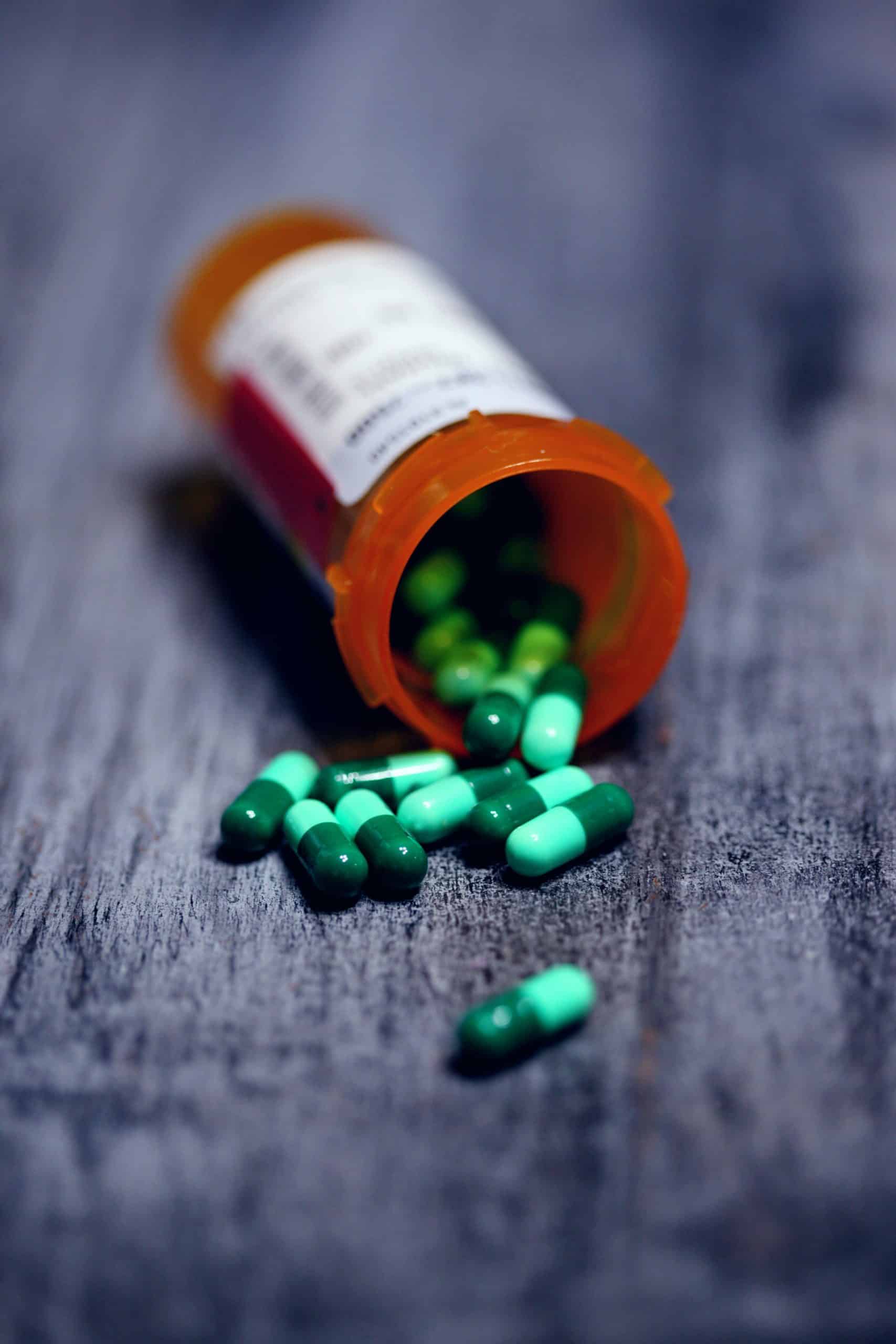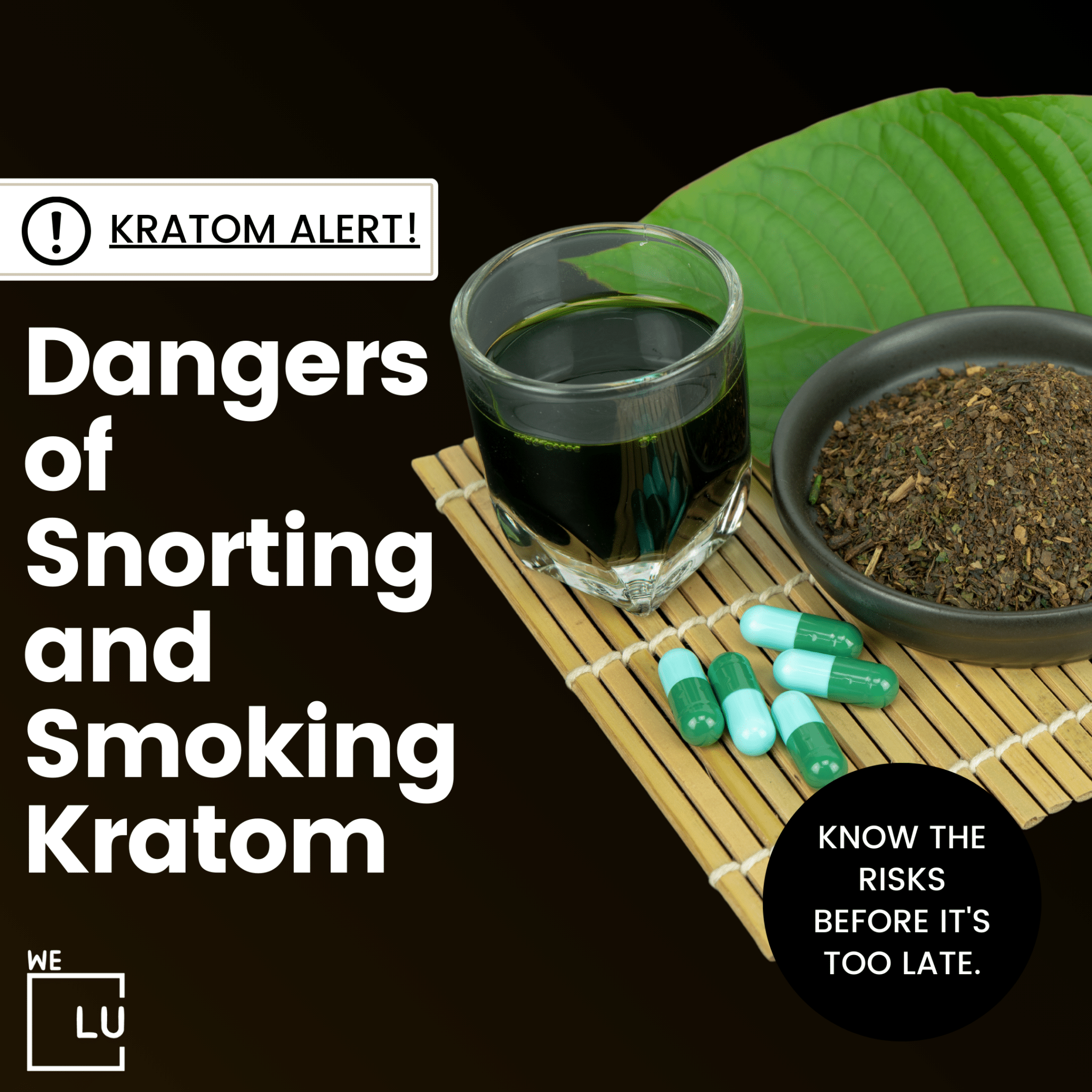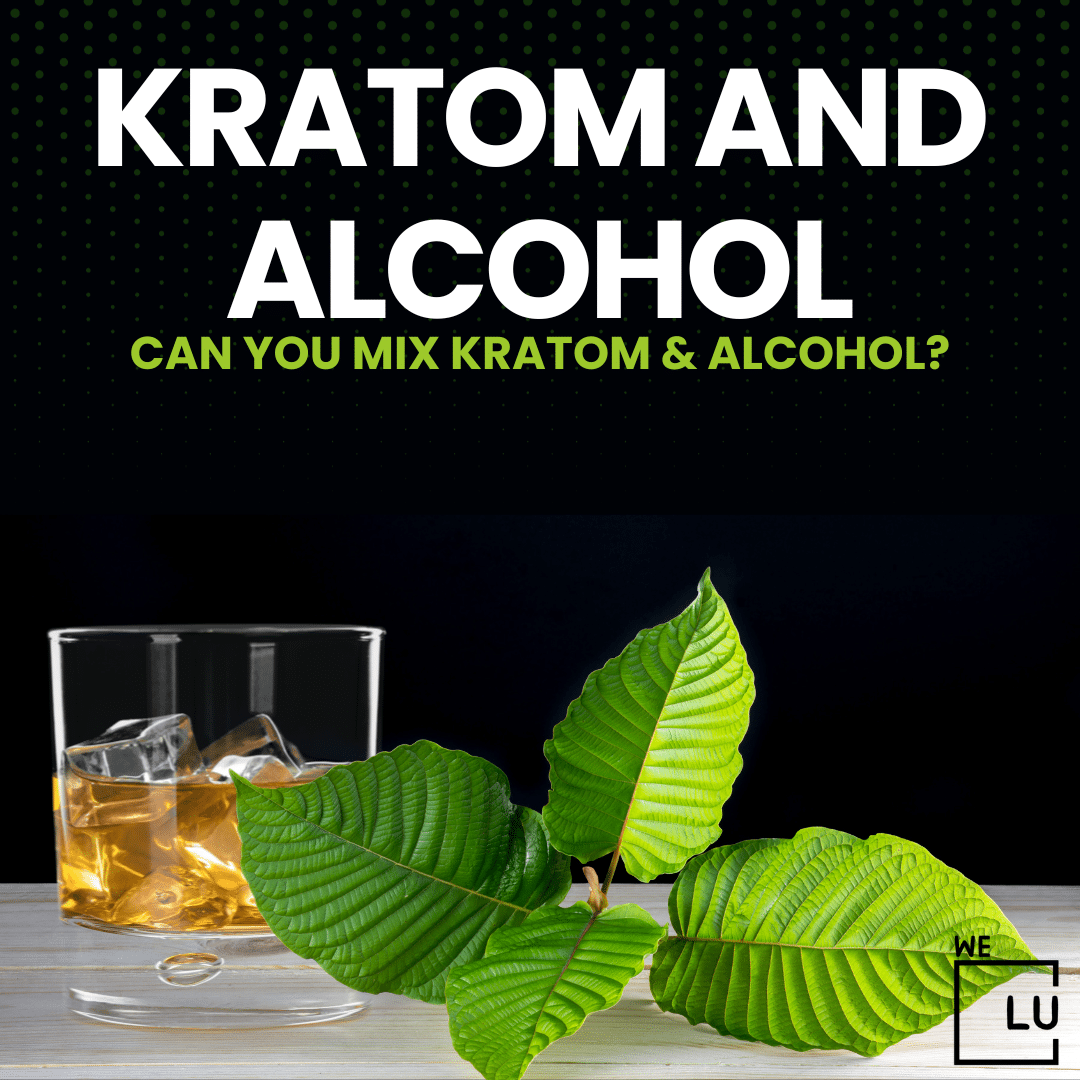What Is Crack Cocaine?
Crack cocaine is a highly potent and illicit stimulant drug that is derived from powdered cocaine. It is a crystalline form of cocaine that is typically smoked, producing a rapid and intense euphoria. The name “crack” comes from the cracking sound the drug makes when it is heated and smoked.
Here’s a brief overview of how crack cocaine is produced and its effects:
- Production: Crack cocaine is created by chemically altering powdered cocaine, usually by mixing it with baking soda and water. The mixture is then heated, forming solid crystals that can be broken into small, rock-like pieces.
- Form: Crack cocaine is often sold as small, off-white, or tan-colored rocks or crystals. It is distinct from powdered cocaine in terms of its appearance, route of administration, and effects.
- Administration: While powdered cocaine is typically snorted or injected, crack cocaine is smoked. Users heat the crystals in a pipe and inhale the vapors. Smoking crack allows the drug to enter the bloodstream quickly, leading to a rapid and intense high.
- Effects: Crack cocaine produces a powerful but short-lived euphoria. Users often experience increased energy, heightened alertness, and a sense of confidence. However, the effects are short-lived, usually lasting only about 15 minutes, which often leads to a cycle of repeated use.
- Risks: The use of crack cocaine is associated with a range of health risks and adverse effects. These can include addiction, cardiovascular issues, respiratory problems, anxiety, paranoia, and cognitive impairments. Additionally, the method of administration (smoking) can lead to respiratory issues and damage to the lungs.
- Addiction: Crack cocaine is highly addictive, and repeated use can lead to the development of tolerance, dependence, and addiction. Overcoming crack cocaine addiction often requires professional help and support.
Crack cocaine has been a significant public health concern due to its addictive nature and associated social and health problems. Efforts to address crack cocaine abuse often involve a combination of prevention, treatment, and support services.
What Is The Difference Between Cocaine And Crack?
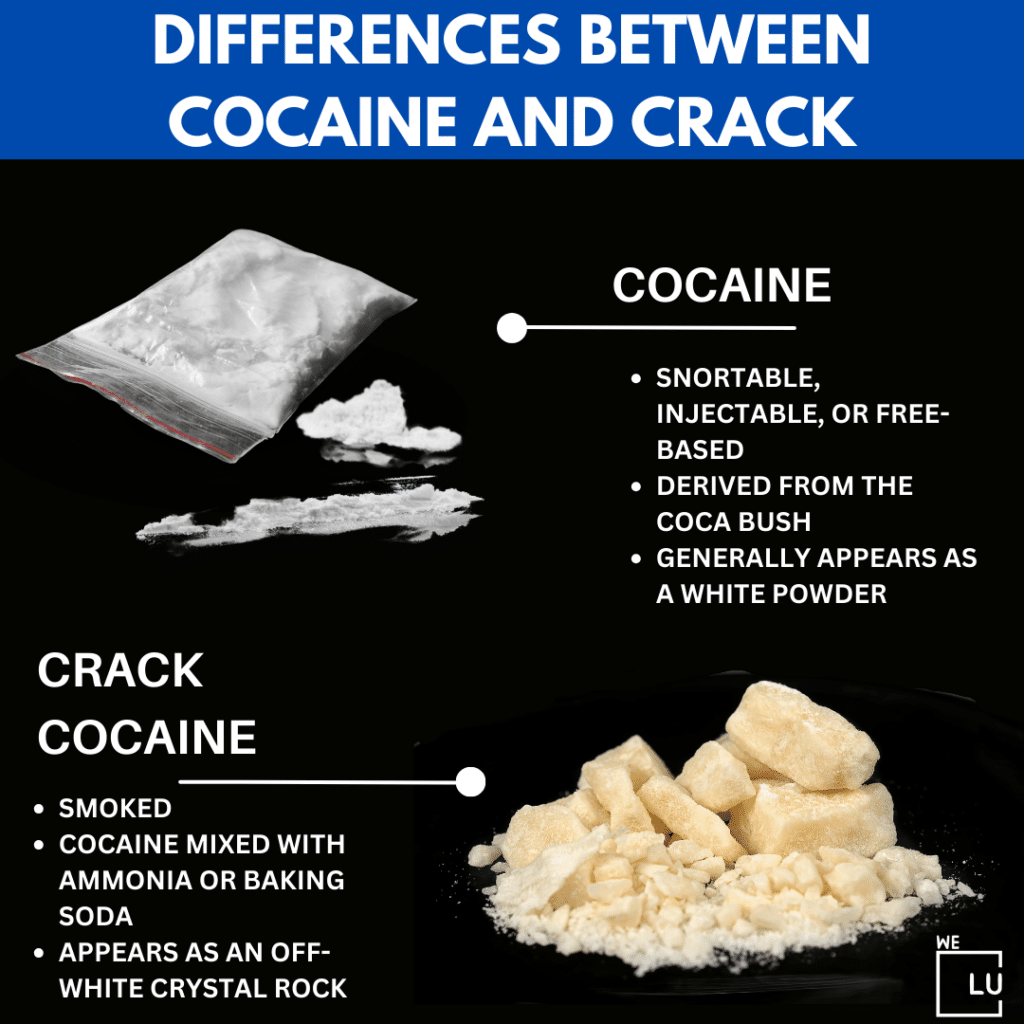
Cocaine and crack cocaine are two different forms of the same drug, each with distinct characteristics. Here are the primary differences between cocaine and crack cocaine:
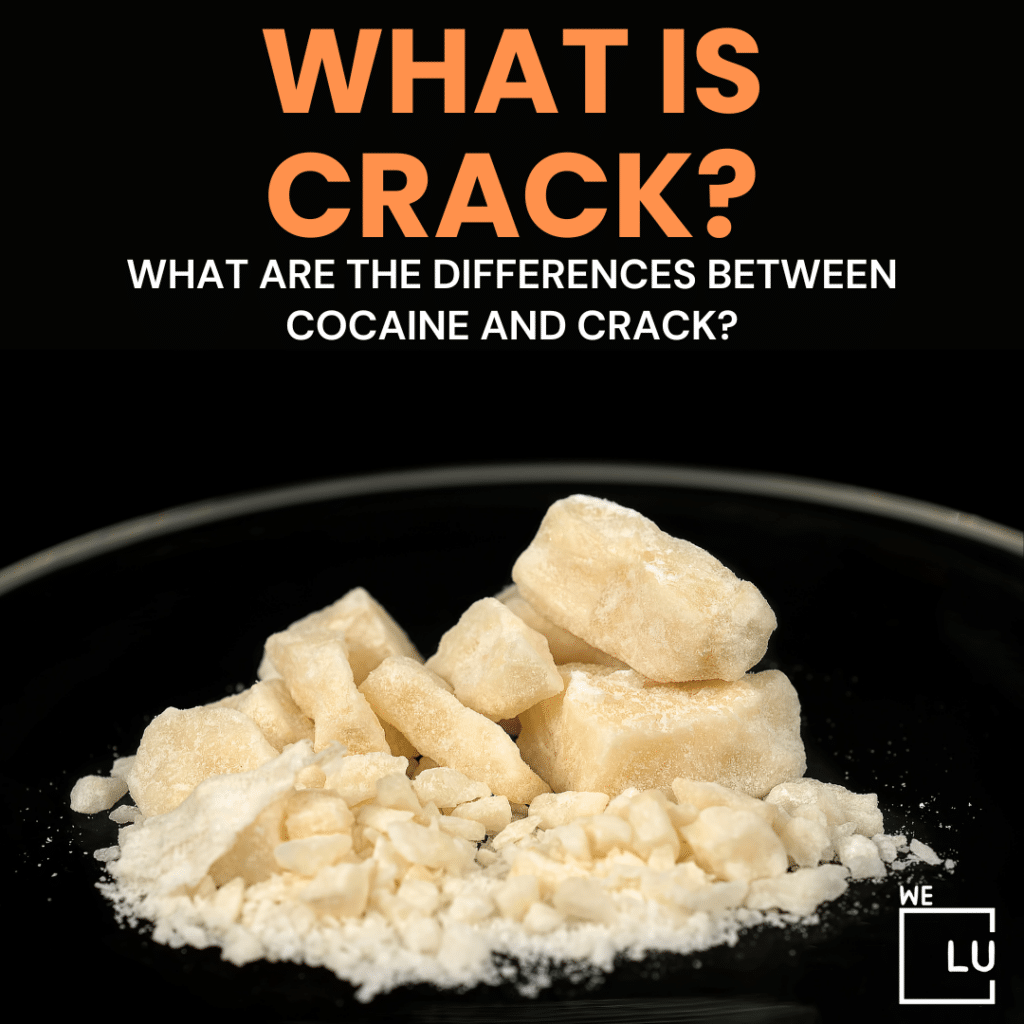
Skip To:
Learn More:
- Crack Addiction, Signs, Symptoms, Treatment, Therapies & Side Effects
- What Does Crack Smell Like? Identifying Crack Cocaine Use and Abuse
- How Long Does Cocaine Stay in Your System? Blood, Urine, and Saliva Tests
- What is Freebase Cocaine? Is it the Same as Smoking Crack?
- What Is Coke Nose? Cocaine Nose And Other Nose Damage From Cocaine
- Can You Eat Cocaine? Can You Get High From Eating Cocaine?
| Characteristic | Cocaine | Crack Cocaine |
|---|---|---|
| Form | White, crystalline powder | Crystalline or rock-like substance, often white or tan |
| Route of Administration | Snorted or injected | Smoked |
| Effect Duration | 15 to 30 minutes | 5 to 10 minutes |
| Purity and Potency | Purity can vary; potency depends on purity | More concentrated and considered more potent |
| Social and Economic Factors | Historically associated with a more affluent demographic | Historically associated with lower-income communities due to lower cost |
| Legal Implications | Illegal | Illegal |
Despite these differences, both forms of cocaine carry significant health risks, including addiction, cardiovascular problems, and psychological issues. Treatment for cocaine abuse and addiction typically involves a combination of behavioral therapy, counseling, and support services.

Get Your Life Back
Find Hope & Recovery. Get Safe Comfortable Detox, Addiction Rehab & Dual Diagnosis High-Quality Care.
Hotline (855) 695-1160What Does Crack Look Like?
Crack cocaine typically looks like small, solid, and off-white or tan-colored rocks or crystals. The appearance can vary somewhat depending on the manufacturing process and any additional substances that may have been added. The stones are usually irregularly shaped, ranging from small pebbles to larger chunks.
The term “crack” actually comes from the cracking sound the drug makes when it is heated. This sound is produced when crack cocaine is smoked, as the heat causes the drug to vaporize, and users inhale the resulting fumes to experience a rapid and intense high.
In contrast to powdered cocaine, which is a fine white powder, crack cocaine’s solid form is a result of the chemical process used to create it. The rocks are broken into smaller pieces for smoking. The drug is commonly packaged in small plastic bags or vials for distribution. The distinctive appearance of crack cocaine makes it easily distinguishable from other forms of the drug.
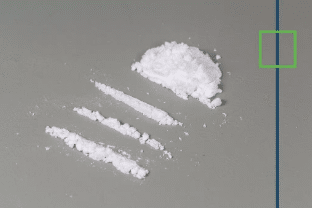
What Does Crack Smell Like?
Crack cocaine is known for having a distinctive and pungent odor when smoked. People often describe the smell of crack smoke as strong, acrid, and chemical-like. The odor can linger in the air and on clothing, making it noticeable to those nearby.
The specific smell comes from the chemicals used in the production process and the burning of the crack cocaine crystals. The main component, cocaine, itself has a somewhat bitter taste and odor. However, when crack is smoked, the smell can be more intense due to the substances used in the processing, such as baking soda.
The smell of crack smoke can be a strong indicator of drug use, and its distinct odor may raise concerns among those who come into contact with it. If you encounter an unfamiliar or suspicious odor and suspect drug use, it’s advisable to exercise caution and consider seeking appropriate assistance or intervention.
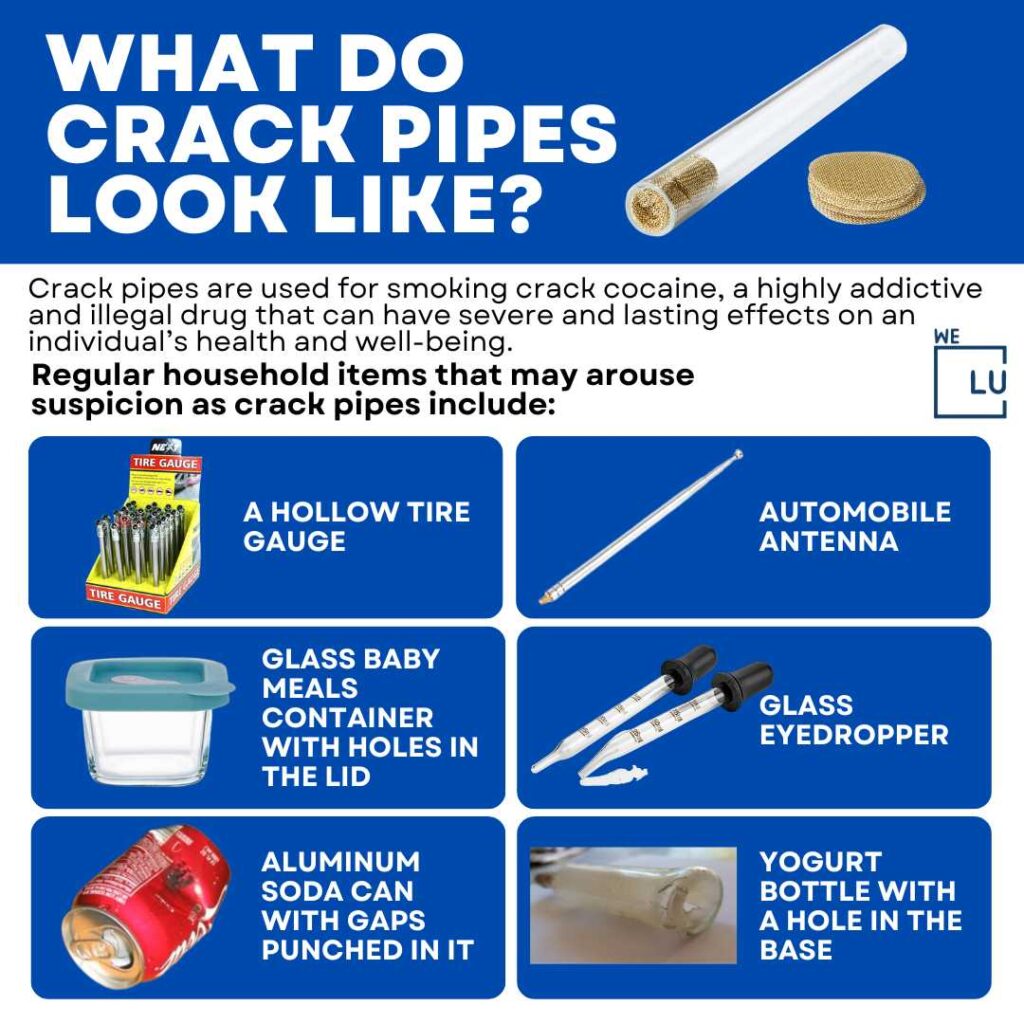
What Do Crack Pipes Look Like?
Crack pipes, also known as chore pipes or stems, are typically small glass or metal tubes that are used for smoking crack cocaine. They are designed to withstand the high temperatures required to vaporize the crack cocaine crystals. Here are some characteristics of crack pipes:
- Appearance: Crack pipes are often small and cylindrical, resembling a tube or stem. They can be made of glass, metal, or other heat-resistant materials.
- Construction: The pipe typically consists of two main parts—the stem and the bowl. The stem is the tube through which the user inhales the crack cocaine vapors, and the bowl is the part that holds the crack cocaine crystals.
- Screens: Some crack pipes have a small screen or filter inside the bowl to prevent the crack cocaine from being sucked into the mouth during inhalation.
- Brillo Pad or Chore Boy: To facilitate smoking, users often place a small piece of Brillo pad or Chore Boy (a type of scouring pad) in the bowl. The crack cocaine is then placed on top of the pad, and as the pad is heated, the vapors are inhaled.
- Compact Size: Crack pipes are typically compact and discreet, making them easily concealable.
The use of crack pipes is associated with illicit drug use, and their possession can have legal implications. Additionally, the use of crack cocaine and crack pipes carries significant health risks, including addiction, cardiovascular issues, respiratory problems, and other adverse effects. If you suspect someone is using crack cocaine or any illicit substances, it’s advisable to encourage them to seek professional help and support.
Get Help. Get Better. Get Your Life Back.
Searching for an Accredited Drug and Alcohol Rehab Centers in Near You?
Even if you have failed previously and relapsed, or are in the middle of a difficult crisis, we stand ready to support you. Our trusted behavioral health specialists will not give up on you. When you feel ready or just want someone to speak to about therapy alternatives to change your life call us. Even if we cannot assist you, we will lead you to wherever you can get support. There is no obligation. Call our hotline today.
FREE Addiction Hotline – Call 24/7What Does Crack Do To Your Body?
Crack cocaine can have significant and immediate effects on the body when used. Here are some key impacts:
- Stimulant Effects: Crack is a powerful stimulant that increases dopamine levels in the brain, leading to intense euphoria, energy, and alertness.
- Cardiovascular Effects: Crack use can cause increased heart rate, elevated blood pressure, and vasoconstriction, potentially leading to cardiovascular issues, including heart attacks and strokes.
- Respiratory Effects: Smoking crack can irritate the respiratory system, leading to coughing, shortness of breath, and an increased risk of respiratory infections.
- Appetite Suppression: Crack use often results in a decreased appetite, which can contribute to malnutrition and weight loss.
- Dental Issues: Smoking crack can cause dental problems, including tooth decay and gum disease, often referred to as “crack mouth.”
- Agitation and Anxiety: Users may experience heightened levels of anxiety, restlessness, and paranoia, potentially leading to aggressive or erratic behavior.
- Insomnia: The stimulant effects of crack can interfere with sleep, leading to insomnia and disrupted sleep patterns.
- Addiction and Dependence: Crack cocaine is highly addictive, and repeated use can lead to the development of tolerance and dependence, making it difficult for individuals to stop using the drug.
- Psychological Effects: Long-term use of crack cocaine can have profound effects on mental health, including cognitive impairments, hallucinations, and increased risk of psychiatric disorders.
- Social Consequences: Crack use can have detrimental effects on relationships, employment, and overall social functioning. Users may experience financial difficulties and legal problems due to their drug use.
Crack cocaine use poses serious health risks, and individuals struggling with addiction to crack cocaine often require professional help and support to overcome the physical and psychological challenges associated with the drug.
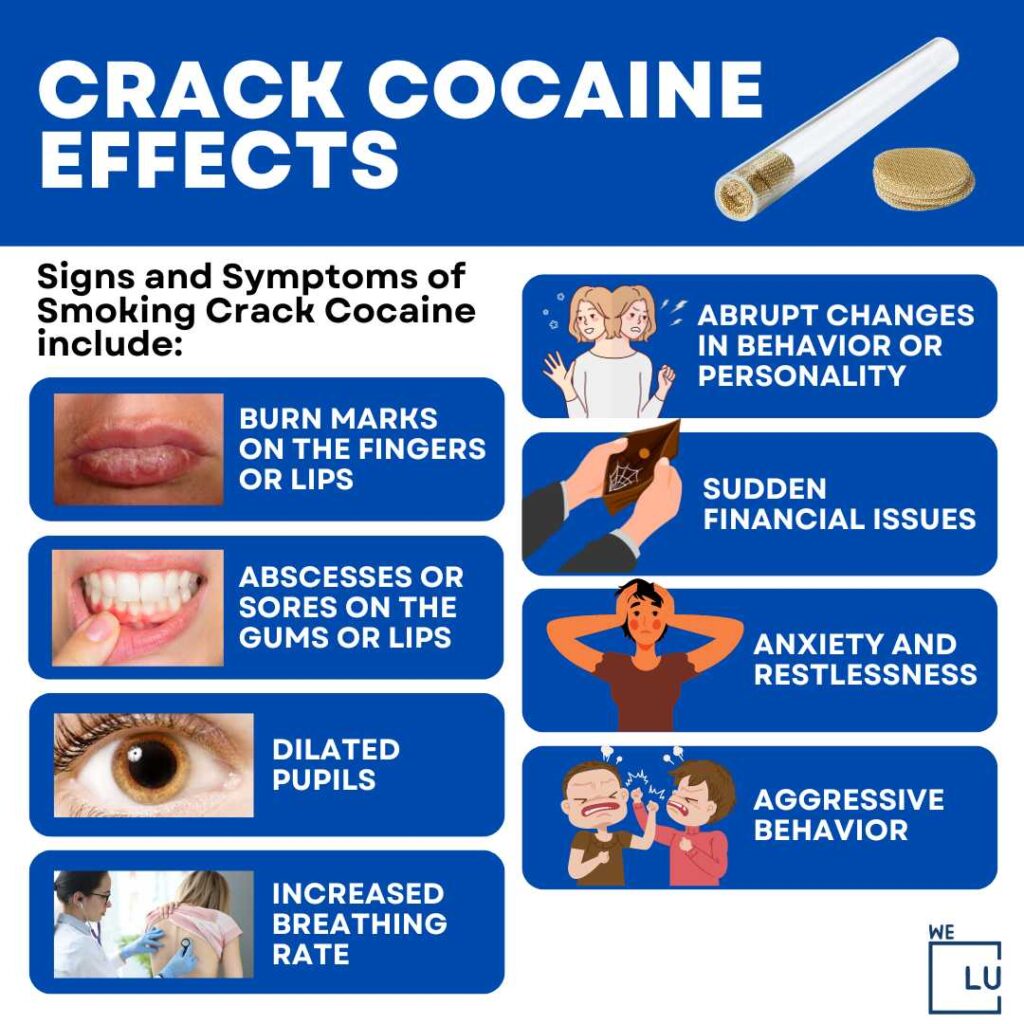
First-class Facilities & Amenities
World-class High-Quality Addiction & Mental Health Rehabilitation Treatment
Rehab Centers TourRenowned California Addiction Center. Serene Private Facilities. Inpatient rehab programs vary.
Addiction Helpline (855) 695-1160Proven recovery success experience, backed by a Team w/ History of:
15+
Years of Unified Experience
100s
5-Star Reviews Across Our Centers
10K
Recovery Success Stories Across Our Network
- Low Patient to Therapist Ratio
- Onsite Medical Detox Center
- Comprehensive Dual-Diagnosis Treatment
- Complimentary Family & Alumni Programs
- Coaching, Recovery & Personal Development Events
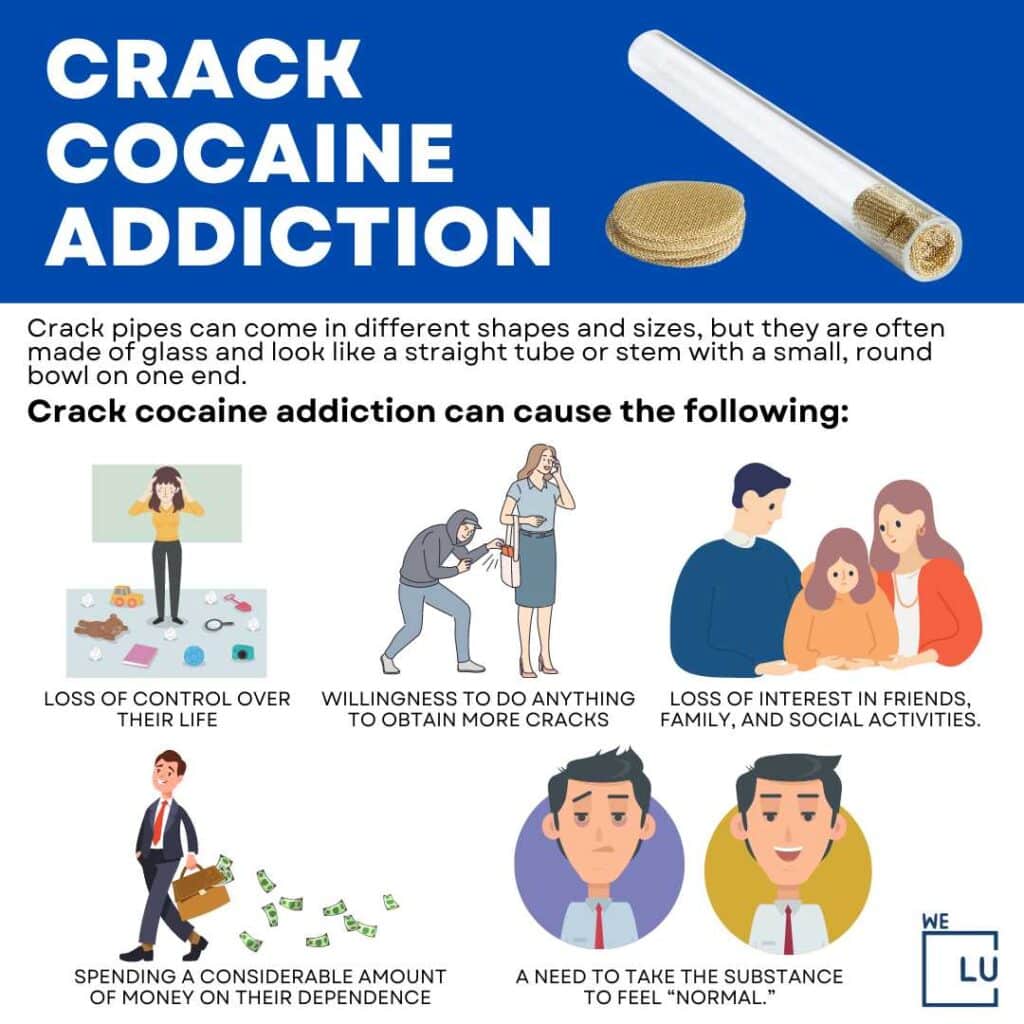
Crack Cocaine Addiction
Crack cocaine addiction is a severe and challenging condition characterized by compulsive and uncontrollable use of crack cocaine despite its negative consequences. Addiction to crack cocaine can have profound effects on various aspects of an individual’s life, including physical health, mental well-being, relationships, and overall functioning. Here are some key aspects of crack cocaine addiction:
- Compulsive Drug Seeking and Use: Individuals with crack cocaine addiction often engage in compulsive drug-seeking behavior, spending a significant amount of time and resources obtaining and using the drug.
- Tolerance: Over time, individuals may develop tolerance to the effects of crack cocaine, requiring larger amounts of the drug to achieve the desired high.
- Withdrawal Symptoms: When not using crack, individuals may experience withdrawal symptoms such as fatigue, depression, increased appetite, and intense drug cravings. These symptoms can contribute to the cycle of addiction.
- Physical Health Consequences: The use of crack cocaine is associated with various physical health risks, including cardiovascular issues (e.g., heart attacks, strokes), respiratory problems, dental issues, and overall deterioration of health.
- Psychological Impact: Crack cocaine addiction can lead to significant psychological consequences, including anxiety, paranoia, hallucinations, and cognitive impairments. These effects can contribute to a decline in mental health.
- Social and Legal Consequences: Crack addiction often results in strained relationships, difficulties in employment, financial problems, and legal issues. The social consequences can contribute to a cycle of continued drug use.
- Treatment Challenges: Overcoming crack cocaine addiction can be challenging, and professional help is often necessary. Treatment may involve a combination of behavioral therapies, counseling, support groups, and, in some cases, medication-assisted treatment.
- Relapse Risk: Crack cocaine addiction has a high risk of relapse, and individuals in recovery need ongoing support and strategies to prevent relapse.
- Co-occurring Disorders: Many individuals with crack cocaine addiction may also have co-occurring mental health disorders, such as depression or anxiety, which require integrated treatment approaches.
- Family and Community Impact: Crack addiction can have a significant impact on families and communities, contributing to social issues, crime, and community health challenges.
Individuals struggling with crack cocaine addiction should seek help from healthcare professionals, addiction specialists, or support groups. Treatment options are available, and recovery is possible with the right support and commitment to the recovery process.
World-class, Accredited, 5-Star Reviewed, Effective Addiction & Mental Health Programs. Complete Behavioral Health Inpatient Rehab, Detox plus Co-occuring Disorders Therapy.
CALL (855) 695-1160End the Addiction Pain. End the Emotional Rollercoaster. Get Your Life Back. Start Drug, Alcohol & Dual Diagnosis Mental Health Treatment Now. Get Free No-obligation Guidance by Substance Abuse Specialists Who Understand Addiction & Mental Health Recovery & Know How to Help.
Crack Cocaine Overdose
A crack cocaine overdose occurs when an individual takes a toxic amount of crack cocaine, leading to severe and potentially life-threatening symptoms. Overdosing on crack cocaine is a medical emergency that requires immediate attention. Here are some signs and symptoms of a crack cocaine overdose:
- Increased Heart Rate: Crack cocaine is a stimulant that can significantly elevate heart rate. In an overdose, this effect may become excessive, leading to tachycardia (rapid heart rate) and increasing the risk of cardiovascular complications.
- Elevated Blood Pressure: Crack cocaine can cause a sudden and dramatic increase in blood pressure. Overdose may exacerbate this effect, contributing to hypertensive crises and potential damage to the cardiovascular system.
- Hyperthermia: Excessive use of crack cocaine can lead to an increase in body temperature (hyperthermia). In an overdose, this effect may become severe, contributing to organ dysfunction and other complications.
- Agitation and Restlessness: Overdosing on crack cocaine can intensify psychological symptoms, leading to severe agitation, restlessness, anxiety, and paranoia.
- Seizures: Crack cocaine overdose increases the risk of seizures, which can further contribute to complications such as injury, loss of consciousness, and respiratory distress.
- Respiratory Distress: Overdose can cause respiratory problems, including difficulty breathing, shortness of breath, and in severe cases, respiratory failure.
- Chest Pain: The stimulant effects of crack cocaine can cause chest pain, and an overdose may exacerbate this symptom, potentially leading to heart-related complications.
- Confusion: Severe mental confusion and disorientation may occur in the case of a crack cocaine overdose.
- Loss of Consciousness: In severe cases, overdose can lead to a loss of consciousness, coma, and potentially death.
If you recognize the signs of a crack cocaine overdose, seek emergency medical assistance immediately. If you suspect someone is experiencing an overdose, call emergency services (such as 911 in the United States) without delay. Prompt medical intervention is essential to address the potentially life-threatening complications associated with crack cocaine overdose. Additionally, providing information about the substance used and the symptoms observed can assist healthcare professionals in delivering appropriate and timely care.
Experience Transformative Recovery at the We Level Up California Treatment Center.
See our authentic success stories. Get inspired. Get the help you deserve.



Start a New Life
Begin with a free call to an addiction & behavioral health treatment advisor. Learn more about our dual-diagnosis programs. The We Level Up treatment center network delivers recovery programs that vary by each treatment facility. Call to learn more.
- Personalized Care
- Caring Accountable Staff
- World-class Amenities
- Licensed & Accredited
- Renowned w/ 100s 5-Star Reviews
We’ll Call You
PJ O’Brien Got His Life Back From Crack Addiction and now Has A Loving Wife and child During Sobriety
Search What Is Crack, Drug & Alcohol Rehab / Detox & Mental Health Topics & Resources
Sources
- National Institute on Drug Abuse (NIDA) – Cocaine: https://www.drugabuse.gov/drug-topics/cocaine Read more: Crack Drug, What Does Crack Smell Like, What Is Crack Cocaine, Drugs Crack,
- Substance Abuse and Mental Health Services Administration (SAMHSA) – Treatment Locator: https://findtreatment.samhsa.gov/
- National Institutes of Health (NIH) – Cocaine Addiction: https://www.drugabuse.gov/publications/research-reports/cocaine/what-cocaine
- U.S. Department of Health and Human Services (HHS) – Opioids: https://www.hhs.gov/opioids/
- National Library of Medicine (NLM) – Cocaine Addiction: https://medlineplus.gov/cocaine.html
- National Institute of Mental Health (NIMH) – Substance Use and Addiction: https://www.nimh.nih.gov/health/topics/substance-use-and-addiction/index.shtml Read more: Crack Drug, What Does Crack Smell Like, What Is Crack Cocaine, Drugs Crack,
- National Survey on Drug Use and Health (NSDUH) – Substance Use Data: https://www.samhsa.gov/data/data-we-collect/nsduh-national-survey-drug-use-and-health
